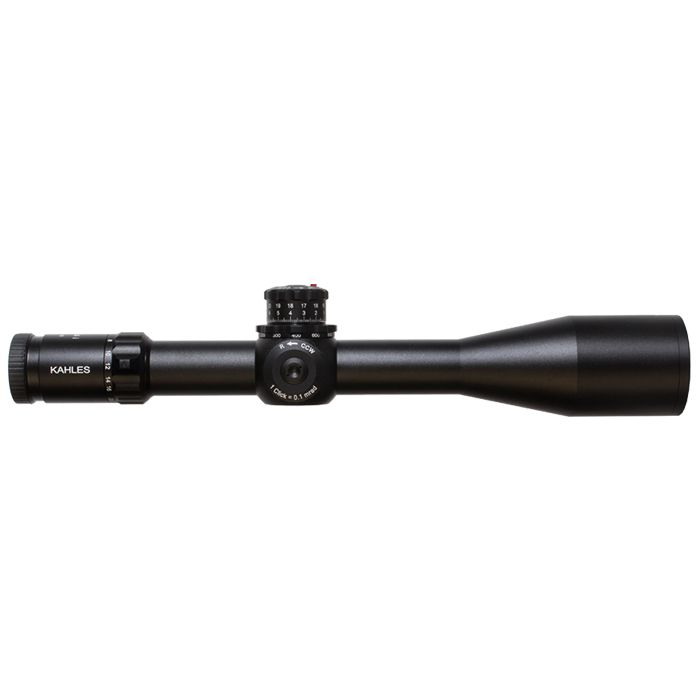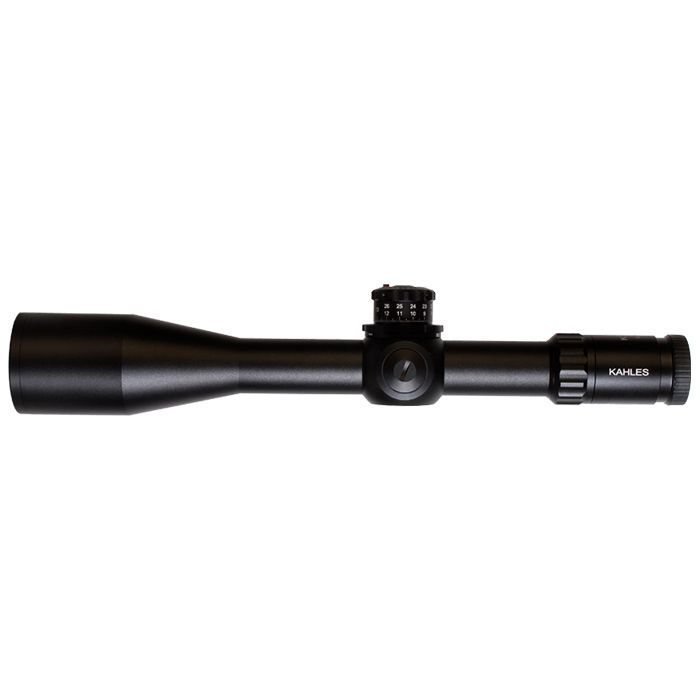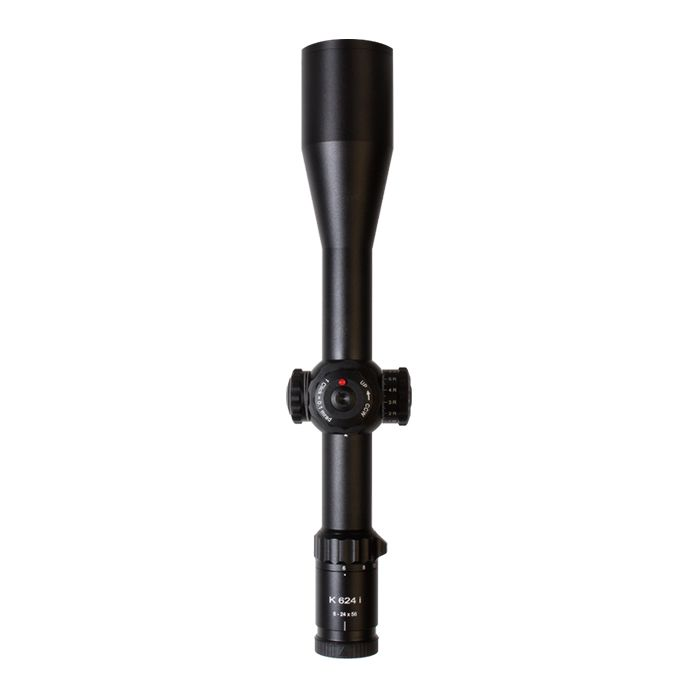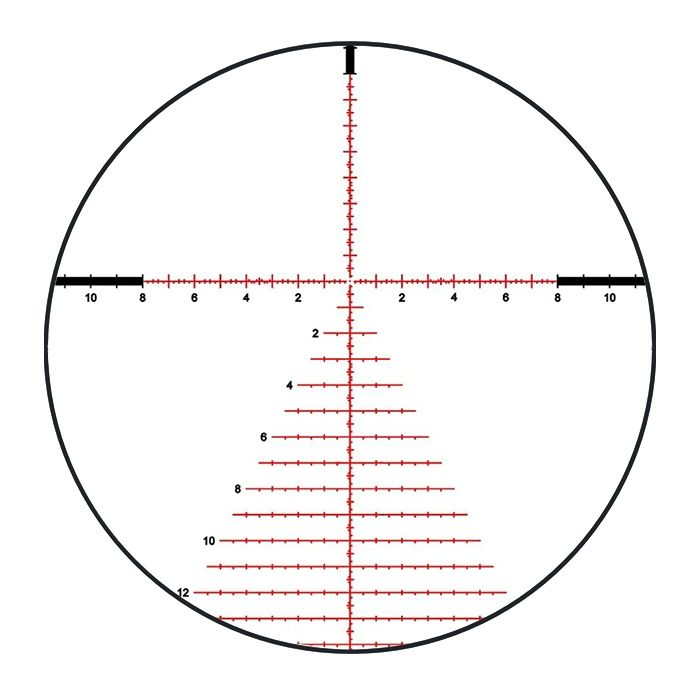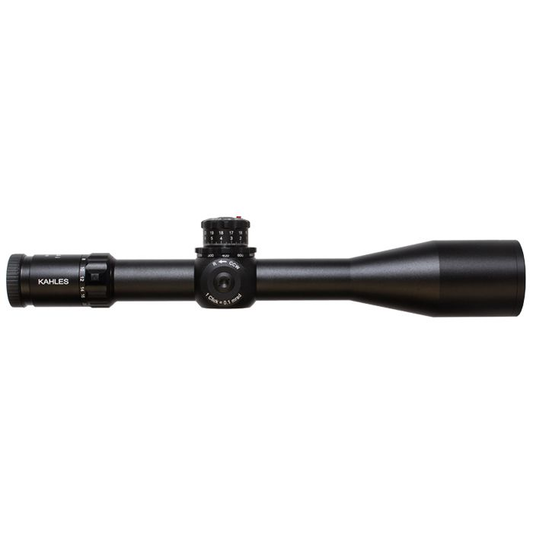

Kahles K624i 6-24x56mm RSW CCW Riflescope 10681 offers precise targeting for long-range shooting with its extensive magnification range of 6x to 24x. Its first focal plane SKMR4 reticle allows for accurate aim points that adjust as you zoom, providing flexibility in various shooting scenarios. A 56mm objective lens ensures excellent light transmission, enhancing visibility in low-light conditions. The exposed elevation turret facilitates quick adjustments on the field, enabling immediate responses to changing distances and wind conditions.
Constructed with a robust 34mm main tube, this riflescope guarantees durability and stability, essential for high-performance optics. The illuminated reticle improves visibility from dawn to dusk, making it a reliable choice for all-day shooting. Weighing in at 33.5 ounces and measuring 15.9 inches in length, the K624i balances portability with functionality. Whether you're a competitive shooter or a hunting enthusiast, this riflescope is built to elevate your shooting experience.
Key Features:
- FIRST FOCAL PLANE: Allows for accurate reticle scaling at all magnifications, ensuring precise aim points.
- SKMR4 RETICLE: Designed for rapid target acquisition and effective ballistic compensation by Shannon Kay.
- EXPOSED ELEVATION TURRET: Facilitates quick, accurate adjustments for on-the-fly shooting accuracy.
- EXTENSIVE MAGNIFICATION: Versatile 6x to 24x range accommodates a variety of shooting distances.
- LARGE OBJECTIVE LENS: 56mm diameter enhances light gathering, providing a brighter sight picture.
- ROBUST BUILD QUALITY: Strong 34mm tube diameter ensures a durable and stable platform for optics.
- ILLUMINATED RETICLE: Improves reticle visibility in dim conditions for effective use at all times.
- PRECISE ADJUSTMENTS: Defined clicks at 0.1 MRAD per click allow for fine-tuning in accuracy.
Technical Specifications
| Specification | Detail |
|---|---|
| Scope Weight | 33.5 ounces |
| Scope Length | 15.9 inches |
| Magnification Range | 6x - 24x |
| Scope Objective Diameter | 56mm |
| Scope Tube Size / Mount | 34mm |
| Turret Adjustment | 0.1 MRAD |
| Elevation Turret Details | Exposed |
| Parallax Adjustment | 50 yards to infinity |
| Reticle Position | First Focal Plane |
| Reticle Details | SKMR4 |
| Field of View | 20.4 - 5.1 ft @ 100 yds |
| Exit Pupil | 9.4 - 2.3mm |
| Eye Relief | 3.54 inches |
| Twilight Factor | 18.3 - 36.7 |
| Illuminated Reticle | Yes |
| Scope Finish | Black |
| UPC | 708026106811 |
| MPN | 10681 |
What's in the Box?
- Kahles K624i 6-24x56mm RSW CCW Riflescope 10681
- Protective Lens Covers
- Lens Cleaning Cloth
- User Manual
Customer Reviews
“This scope has made my long-range shooting much more precise. The clarity is outstanding.”
“I appreciate the illuminated reticle for those early morning hunts. Highly recommend for serious shooters.”
“The adjustments are smooth and reliable, making it easy to dial in for different conditions.”
FAQ
What makes the K624i suitable for low-light conditions? The 56mm objective lens allows for superior light transmission, which enhances visibility during dawn and dusk, making it effective for low-light shooting scenarios.
How does the first focal plane reticle benefit my shooting? The reticle scales with magnification, providing accurate holdover points at any zoom level, which is crucial for long-range engagements. This feature helps maintain accuracy regardless of the distance to the target.
Is the K624i durable for rugged field use? Yes, the riflescope is constructed from aircraft-grade aluminum and is both waterproof and fog-proof, ensuring reliable performance in various weather conditions. Its robust build quality withstands the rigors of outdoor use.
How does the illuminated reticle operate? The illumination can be adjusted to various brightness levels, allowing you to optimize visibility based on surrounding light conditions, ensuring you can always see the reticle clearly.
How does the K624i compare to other tactical scopes? The K624i stands out with its premium optics, robust construction, and versatile magnification range, making it a solid choice for both competitive shooting and tactical applications, offering features that cater to serious marksmen.
Similar Models
Looking for additional options? Explore the complete Kahles collection, including models like the Kahles K312i for shorter ranges and the Kahles K1050 for extreme long-range precision. Each model is designed to meet the needs of discerning shooters, ensuring you find the perfect optics for your requirements.
You May Also Like
Here’s some of our most similar products people are buying. Click to discover trending style.

